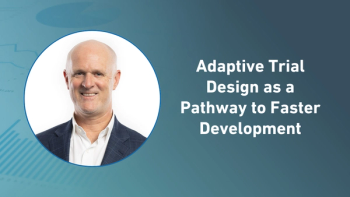
Risk-Based Monitoring Shifts Equal Huge Operational Change
With all of the talk and emphasis on data and using technology and tools to determine better monitoring strategies, the other component becomes operational. What will companies do internally to manage a monitoring shift?
SPOTLIGHT EVENT
Cambridge, MassachusettsDownload Brochure
RELATED
-
- Risk-Based Approaches
- ICON Exec Discusses ICONIK MonitoringMore in Risk-Based Monitoring
With all of the talk and emphasis on data and using technology and tools to determine better monitoring strategies, the other component becomes operational. What will companies do internally to manage a monitoring shift? Mike Luker, Senior Advisor in Clinical Development Innovation at Eli Lilly, and RBM work stream member, noted, “In our TransCelerate working group, for a period of time we were talking past one another. And then it became apparent that each of our member companies has a slightly different operational model. Some are more heavily outsourced in the work that they do. Some hold these capabilities still internally, and so their models look different.”
So while Luker said that the change for each organization would be different, it was still change. “When you think about the magnitude of organizational change, regardless of your operational model, it’s a multidimensional consideration.” And Luker said companies have to think about their capability for centralized monitoring, with roles, processes and systems that, in most companies, don’t exist. The questions to ask are: Who will do centralized monitoring? What skill set is required? Where do those people come from? Does that look like a data manager or a statistician or a CRP or a combination of the three? What systems and processes do you need to support centralized monitoring? How does that change impact what happens at the site in terms of site monitoring? And then how does that particular set of skills need to change to accomplish a more comprehensive source data review task as opposed to transcription checking?
Jeff Kasher, Vice President of the Development Center of Excellence at Eli Lilly, and TransCelerate BioPharma Operations Committee member, agreed, “The magnitude of organizational change that’s going to result is very large. If you think about CRAs today--very labor intensive, significant number of people employed in going to sites and doing source data verification. Over time with this approach, the number of visits to sites goes down, hence, the number of people required to do that goes down. Then you start seeing a blending of the monitoring and data science capability. You’re going to see shifts in what organizations look like.”
For the sites, Kasher noted that some view on-site monitoring visits a nuisance. Others derive security in that it’s sort of a validation that someone’s coming in from the sponsor, checking the data. “If you’re going to have less presence at the site, that piece kind of changes,” said Kasher. “But, again, I think this methodology will allow for overall improved patient safety because we’re going to be able to look at more data real time. It’ll improve site compliance, and it’ll improve data integrity. So it’s good all the way around, but it’s a big change.”
Newsletter
Stay current in clinical research with Applied Clinical Trials, providing expert insights, regulatory updates, and practical strategies for successful clinical trial design and execution.






.png)



.png)



.png)
.png)
